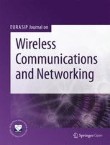The rapid growth of the Internet of Things (IoT) driven by recent advancements in consumer electronics, the fifth generation (5G) and beyond communications cloud-computing-enabled big data analytics has recently attracted tremendous attention from both the industry and academia. One of the significant open challenges for IoT is the limited network lifetime due to massive IoT devices powered by batteries with finite capacities. Although wireless energy harvesting has been proposed to power the IoT devices, the conventional radio architecture of IoT nodes comprises power-hungry RF chains, e.g., oscillators, mixers, and digital-to-analog converters, which can hardly be supported by the energy from wireless energy harvesting alone. Backscatter communications (BackComs), which rely on passive reflection and modulation of an incident radio-frequency (RF) wave, have emerged as a promising solution for energy-constrained IoT devices. However, the contemporary BackCom has several major limitations, such as short transmission range and low data rate. Although these limitations have been tackled in the recently
proposed bistatic BackComs and ambient BackComs, the associated signal modulation, interference cancellation, and resource scheduling aspects have not been sufficiently studied. The observation of the recent surge in relevant research and the emergence of many exciting opportunities motivates us to propose the hot feature topic of “Backscatter Communications for the Internet of Things” for this journal. Thereby, we seek to bring together researchers from both academia and industry to introduce to the latest advancements in BackComs and and discuss future research opportunities.
Topics of interest include, but are not limited to:
- Signal detection for BackComs in IoT
- Hardware and testbed for BackComs
- Performance analysis for BackComs
- Emerging technologies with BackComs including THz, VR, and edge learning
- Channel estimation for BackComs
- Modulation and demodulation for BackComs
- Security and jamming issues for BackComs
- Standards and network protocols for BackComs
- Multi-access edge computing and BackComs
- Full-duplex based BackComs
- Millimeter-wave-based BackComs
- MIMO based BackComs
- Wireless body area networks and BackComs
- Radio resource allocation for BackComs
- Applications of BackComs in wireless powered MEC networks for IoT
Deadlines
Manuscript Submission Deadline: 1 December 2021
Decision Notification: 1 March 2022
Final Manuscript Due: 1 May 2022
Lead Guest Editor:
Yongjun Xu, Chongqing University of Posts and Telecommunications, China
Guest Editors:
Zhaohui Yang, University College London, UK
Yinghui Ye, Xi’an University of Posts and Telecommunications, China
Xiaoli Chu, The University of Sheffield, UK
Submission Guidelines:
Authors should prepare their manuscript according to the guide for authors available from the online submission page of the EURASIP Journal on Wireless Communications and Networking at https://jwcn-eurasipjournals.springeropen.com/. Authors should select "Backscatter Communications for the Internet of Things" in the submission process. Submitted papers must contain original work, which has neither been previously published nor it is currently under review by another journal or conference. Previously published or accepted conference papers must contain at least 50% new material to be considered for the special issue.All papers will be peer-reviewed by at least two independent reviewers. Requests for additional information should be addressed to the corresponding guest editor.Submissions will also benefit from the usual advantages of open access publication:Rapid publication: Online submission, electronic peer review and production make the process of publishing your article simple and efficientHigh visibility and international readership in your field: Open access publication ensures high visibility and maximum exposure for your work - anyone with online access can read your articleNo space constraints: Publishing online means unlimited space for figures, extensive data and video footageAuthors retain copyright, licensing the article under a Creative Commons license: articles can be freely redistributed and reused as long as the article is correctly attributedFor editorial inquiries please contact vincent.salvo@springer.com. Sign up for article alerts to keep updated on articles published in EURASIP Journal on Wireless Communications and Networking - including articles published in this special issue!
